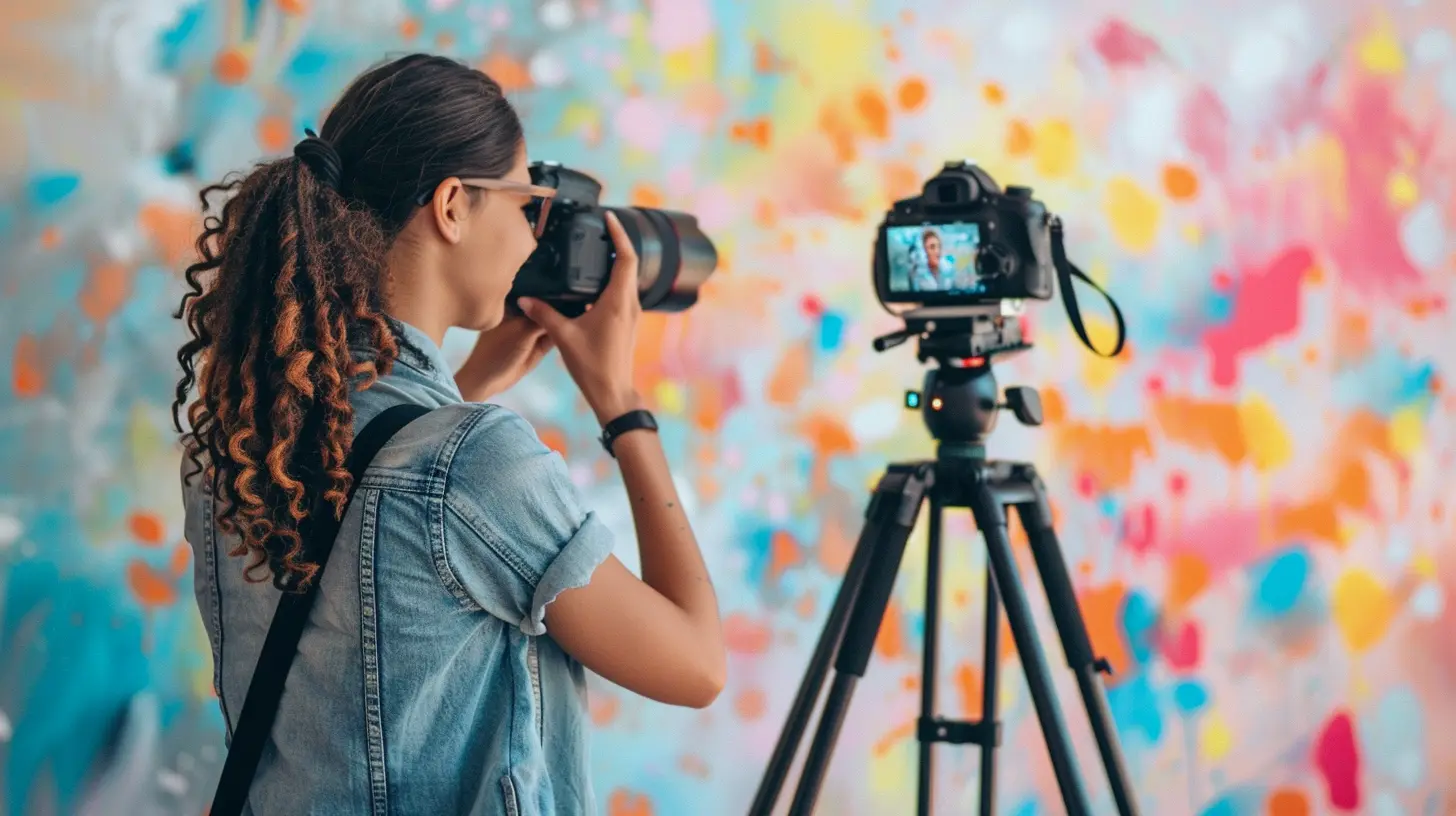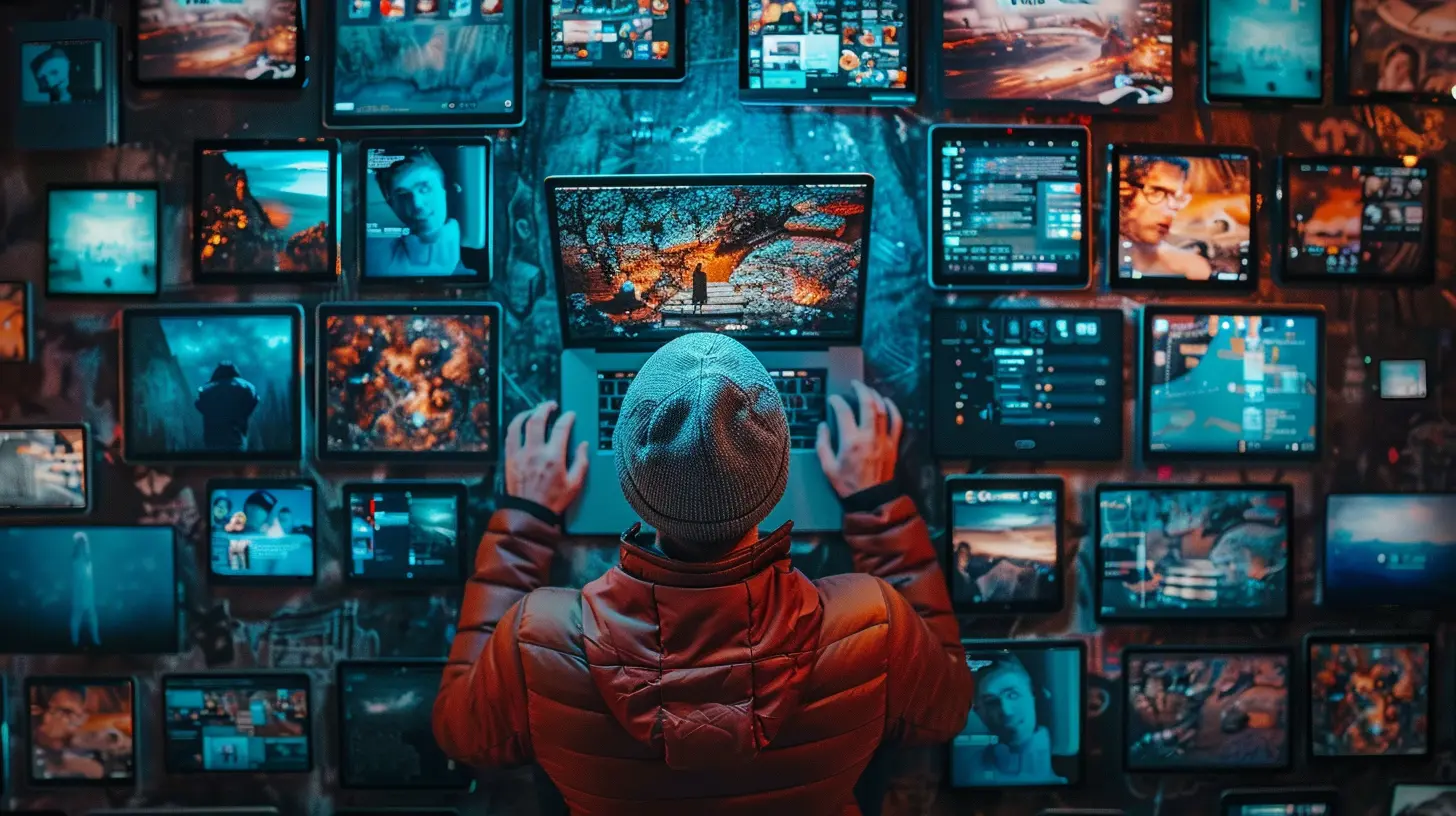The Art of Authentic Influencer Collaborations
22 October 2025
In today’s fast-scrolling digital world, authenticity is the currency of trust — and trust is everything when it comes to influencer marketing. Brands are no longer just chasing viral moments or sky-high follower counts. We're past that. Now, it’s all about real connections, meaningful content, and building long-term love affairs with audiences. Sounds dreamy, right? That’s the essence of the art of authentic influencer collaborations.
So, what exactly makes a collaboration truly authentic? How do brands and influencers create content that actually resonates instead of just blending into the noise? Buckle up, because we’re diving deep into the heart of what makes influencer partnerships powerful — when they're done the right way.
Why Authenticity Matters in Influencer Marketing
Let’s face it: consumers are savvy. Slick ads and overly polished content? Most people can spot that from a mile away. They want real experiences — not a script. That’s where authentic influencer collaborations shine.When an influencer genuinely loves a product or brand, it shows. The enthusiasm? Organic. The storytelling? Effortless. And the engagement? Through the roof.
The truth is, people trust people more than they trust businesses. A Nielsen study even found that 92% of consumers trust recommendations from individuals over branded content. Influencers serve as that trusted voice — but only if their content feels real.
The Difference Between Transactional and Authentic Collaborations
Let’s break it down. Ever see a fashion blogger randomly promote cat food with zero context? Yeah, no thanks.That’s the kind of transactional collaboration that makes audiences cringe. The influencer likely said yes just for the paycheck. It’s a one-off post, probably doesn't align with their content, and it comes off as forced. Guess what? The audience can smell it.
Authentic influencer collaborations go beyond "click this link" posts. They’re rooted in shared values, mutual respect, and — here’s the kicker — a genuine love for the product or brand.
Imagine a wellness influencer who has organically used a specific protein powder for years and finally partners with that brand. Now, that’s a collaboration that just feels right, like peanut butter finally meeting its jelly.
Building Real Relationships with Influencers
You wouldn’t propose marriage on the first date, right? The same goes for influencer partnerships. Building a real relationship takes time.Too often, brands treat influencers like ad spaces — here’s some money, now post. But the best collaborations don't start with a pitch; they start with a conversation.
Here’s what building that relationship looks like:
- Follow and engage with the influencer organically.- Understand their voice and content style before reaching out.
- Start small: Maybe begin with gifted collaborations or exclusive previews.
- Provide value: Share insights, offer creative freedom, give them tools to succeed.
When brands treat influencers like partners (not just platforms), they earn trust — which then turns into content that actually connects.
The Power of Creative Freedom
This one’s big. HUGE.Brands often want to control every word, every visual, every angle. But here's the thing — influencers built their audiences by being themselves. That’s their superpower.
If you box them in with stiff scripts and rigid guidelines, you’re basically asking them to be someone they’re not. And trust me, their audience will sniff out the inauthenticity faster than you can say, “sponsored post.”
Instead, give influencers a clear outline of the brand goals, then let them do their magic. Whether it’s a heartfelt story, a hilarious reel, or a raw behind-the-scenes look — their unique voice is what sells, not yours.
Think of it like a dance: you lead with your goals, but you let them move to their rhythm.
Long-Term Over One-Offs
You know what's better than one great collab? A series of great ones.When brands invest in long-term partnerships, it shows commitment — and authenticity. The influencer becomes a true brand advocate, not just a hired mouthpiece. Audiences begin to associate the brand naturally with the influencer’s lifestyle, seeing it pop up consistently and contextually.
And here’s the real magic: long-term partnerships result in better ROI. That’s not just fluff. Studies show repeated exposure from a trusted voice leads to higher conversion rates and stronger customer loyalty.
It's like planting seeds. One flower is nice. A whole garden? That’s unforgettable.
Matching Values, Not Just Aesthetic
Aesthetic matters — sure. But if that’s all you’re looking at, you’re missing the bigger picture.The most impactful influencer collaborations happen when brand and influencer values align. Whether it’s sustainability, inclusivity, or empowerment — shared beliefs create the foundation for storytelling that moves people.
Before you even send that pitch email, ask yourself:
- Does this influencer genuinely align with our mission?
- Would they use our product even if we weren’t paying them?
- Do they speak in a tone that fits our brand personality?
If the answers are all “yes,” you've probably found a keeper.
Micro-Influencers: The Underrated Powerhouses
Don’t sleep on micro-influencers. While they might have smaller followings (1K–100K), their communities are often highly engaged and laser-focused.Think of them like small-town heroes. They’re known, trusted, and loved in their niche. And because they’re more accessible, their content often feels more genuine and relatable.
Plus, they’re more likely to work with brands that truly resonate with their audience — not just any brand that shows up with a checkbook.
Micro-influencers are perfect for authentic collaborations because they’re usually picky about who they promote. And that’s a good thing.
Avoiding Red Flags in Influencer Partnerships
Not all that glitters is gold. Some influencers might have huge followings, polished content, and the aesthetic of your dreams — but if it doesn’t feel right, it probably isn’t.Here are some red flags to look out for:
1. Inconsistent engagement – 100k followers, but only 50 likes per post? Hmm.
2. Inauthentic sponsored content – Every post is an ad.
3. No alignment with your brand values – If they’ve promoted conflicting brands, think twice.
4. Poor communication – If they’re unprofessional in early talks, don’t expect that to magically change.
Authenticity starts with choosing the right partners. Don’t compromise just to chase numbers.
Measuring Success (Without Losing the Human Element)
Yes, influencer marketing is about numbers — impressions, clicks, conversions. But when it comes to authentic collaborations, you’ve also got to measure brand love, connection, and trust.So, look beyond the vanity metrics.
Ask:
- Did the collaboration spark genuine comments?
- Are people sharing the content?
- Did it start conversations?
- Are people saying “I tried this because of you”?
These are the moments that matter. They’re not always easy to quantify, but they’re priceless.
Real-Life Examples of Authentic Influencer Collaborations
Let’s bring this to life with a couple of quick examples:1. Glossier’s Organic Growth
Glossier famously built its brand not through celebrities, but through real, everyday people who loved the products. They turned their most loyal customers into brand ambassadors — no fake fanfare, just real love. And it worked.2. Daniel Wellington & Micro-Influencers
Daniel Wellington didn’t go big with A-list stars. They focused on micro-influencers and user-generated content. Everyone who wore the watch looked like they genuinely loved it — because they actually did.How to Start Crafting Authentic Collaborations
Ready to walk the talk? Here’s a crash course:1. Identify aligned influencers — Look beyond the numbers.
2. Engage authentically — Don’t leap into DMs with a pitch.
3. Offer value, not just cash — Think experience, growth, and community.
4. Encourage creative freedom — Let their voice shine.
5. Build for the long haul — Think partnership, not just promotion.
6. Measure the right things — Engagement, sentiment, and loyalty.
Wrapping It Up
In a world drowning in content, the only thing that floats is authenticity. Genuine influencer collaborations are more than just marketing tactics — they’re about building bridges between brands, influencers, and audiences based on trust, shared values, and real emotion.So next time you're planning an influencer campaign, remember: you're not just buying a post. You're investing in a relationship. And just like any good relationship, it takes time, trust, and a whole lot of genuine love to make it last.
Because at the end of the day, people don’t remember ads — they remember stories, moments, and feelings. And that, my friend, is the true art of authentic influencer collaborations.
all images in this post were generated using AI tools
Category:
Influencer MarketingAuthor:

Miley Velez
Discussion
rate this article
1 comments
Beth Sharpe
“Like peanut butter and jelly, authentic collaborations spread joy—just avoid the sticky situations! Here’s to tasty partnerships!”
October 25, 2025 at 12:16 PM

Miley Velez
Thank you! I love the peanut butter and jelly analogy—it's all about the right mix for successful partnerships!


